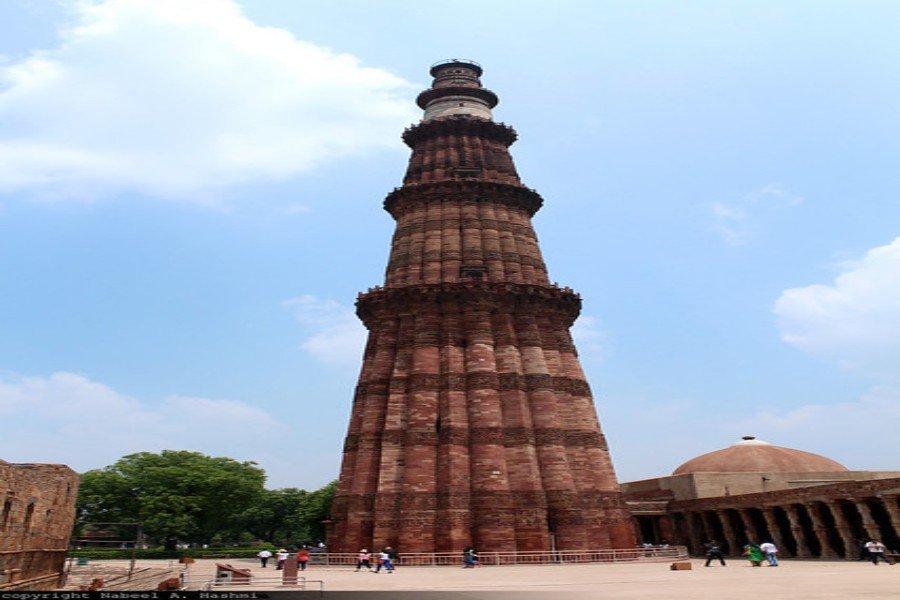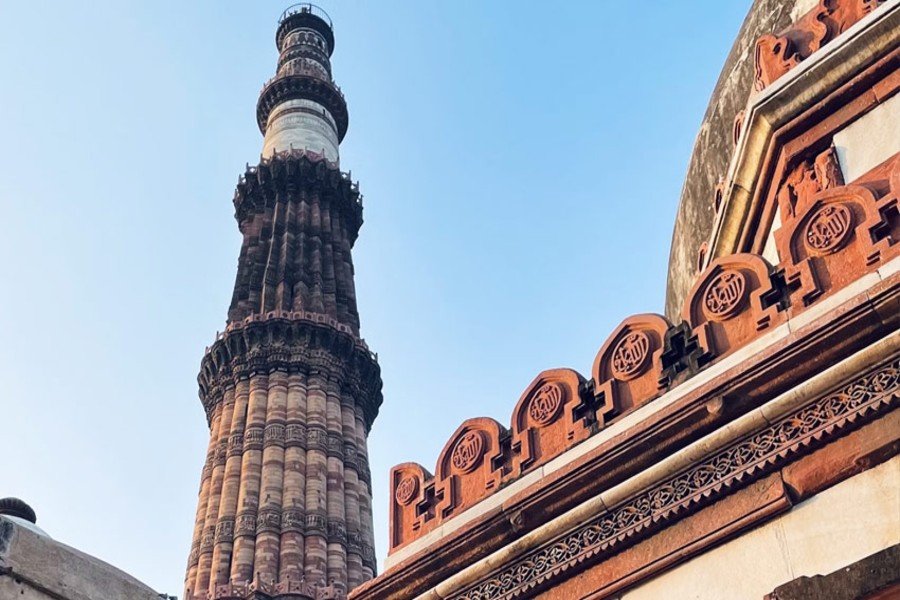:max_bytes(150000):strip_icc()/KriangkraiThitimakorn-5c70b197c9e77c000107b5b9.jpg)
Delhi Sultanate Experience Near Qutub – A Walk Through History
The Delhi Sultanate experience near Qutub offers a wonderful chance to step back in time and see the achievements of Islamic rule in medieval India. Located in the Mehrauli area of South Delhi, this region acts as a living museum of Indo-Islamic architecture, political changes, and cultural blending. From the towering Qutub Minar to lesser-known sites like the Alai Darwaza and Balban’s Tomb, every corner has a story to tell.
In this blog, we will explore the historical significance, architectural wonders, and hidden tales of the Delhi Sultanate experience near Qutub, combining facts, travel tips, and local insights.
Understanding the Delhi Sultanate Experience Near Qutub
What is the Delhi Sultanate?
The Delhi Sultanate was a Muslim kingdom that ruled large parts of the Indian subcontinent from 1206 to 1526. The rulers came mainly from Turkic and Afghan backgrounds and belonged to five dynasties: the Mamluk (Slave) dynasty, Khilji, Tughlaq, Sayyid, and Lodi.
The Delhi Sultanate experience near Qutub is most clearly seen in the architectural heritage that surrounds the Qutub Minar complex. These sites not only showcase the era’s architectural talent but also reflect the social, political, and religious changes of that time.
Qutub Minar – The Symbol of the Sultanate’s Rise
At the center of the Delhi Sultanate experience near Qutub is the Qutub Minar, a UNESCO World Heritage Site and one of Delhi’s most recognizable landmarks.
Architectural Grandeur
Built in 1193 by Qutb-ud-din Aibak and later finished by his successors, the Qutub Minar is a remarkable 73-meter tall structure made of red sandstone and marble. The detailed Arabic inscriptions, fluted design, and five distinct stories showcase the early Sultanate architectural style.
Religious and Political Symbolism
The Qutub Minar was not just a minaret; it stood as a symbol of Muslim rule’s dominance over Delhi. This victory tower represented both a religious statement and a political declaration of power.
Quwwat-ul-Islam Mosque – First Mosque of Delhi
Adjacent to the Qutub Minar is the Quwwat-ul-Islam Mosque, one of the earliest surviving mosques in India and a key part of the Delhi Sultanate experience near Qutub.
Fusion of Hindu-Islamic Architecture
Constructed using materials from 27 dismantled Hindu and Jain temples, this mosque represents a blend of architectural styles. While Islamic arches and domes dominate the design, carvings on the pillars retain distinct Hindu motifs.
Iron Pillar – Engineering Marvel
In the mosque courtyard stands the famous Iron Pillar of Delhi, which predates the Sultanate but is now part of the Qutub complex. It has remained rust-free for over 1600 years, symbolizing ancient India’s metalworking skills and adding to the intrigue of the Delhi Sultanate experience near Qutub.
Alai Darwaza – Gateway to Imperial Ambition
Built by Alauddin Khilji in 1311, the Alai Darwaza is an impressive gateway that welcomes visitors into the Indo-Islamic architecture developed during the Sultanate era.
Islamic Calligraphy and Ornamentation
The structure showcases horseshoe-shaped arches, red sandstone inlay, white marble, and Islamic calligraphy. It is seen as one of the earliest examples of true Islamic architecture in India and plays an essential role in the Delhi Sultanate experience near Qutub.
Alauddin Khilji’s Ambitions – Alai Minar
Near the Qutub Minar is an unfinished structure known as the Alai Minar. Started by Alauddin Khilji, it was meant to be twice the height of the Qutub Minar.
Legacy of Power and Pride
Although construction ceased after Alauddin’s death, the ruins remain a powerful reminder of his ambitions. The Alai Minar embodies the competitive spirit among Sultanate rulers, making it a significant site in the Delhi Sultanate experience near Qutub.
Tomb of Iltutmish – Royal Resting Place
The First Sultanate Mausoleum
Another highlight in the Delhi Sultanate experience near Qutub is the Tomb of Iltutmish, the second ruler of the Slave Dynasty. Built in 1235, this tomb is situated within the Qutub complex and features intricate sandstone carvings.
Blend of Persian and Indian Art
The interior is adorned with verses from the Quran and floral designs. It reflects early mixing of Indo-Islamic styles and serves as a fine example of Sultanate royal burials.
Balban’s Tomb – The First True Arch in India
Located in the Mehrauli Archaeological Park, Balban’s Tomb signifies a major architectural advancement in India—the introduction of the true arch and dome.
Architectural Innovation
Ghiyas-ud-din Balban, the last ruler of the Mamluk dynasty, supported architecture. His tomb, though mostly ruined, marks a significant step in the Delhi Sultanate’s architectural development, greatly adding to the Delhi Sultanate experience near Qutub.
Jamali Kamali Mosque and Tomb – Mysticism and Sufism
A Spiritual Detour
The Jamali Kamali Mosque and Tomb, located a short walk from Qutub Minar, blends Sufi spirituality with artistic brilliance. Constructed during the Lodhi and early Mughal era, it enriches the Delhi Sultanate experience near Qutub.
Mystical Atmosphere
This tranquil complex is said to be haunted, adding a mystical aspect to the visit. The tomb of the Sufi saint Jamali and his companion Kamali features beautiful Persian inscriptions and stucco work.
Mehrauli Archaeological Park – The Sultanate’s Backyard
Beyond the Qutub Complex lies the vast Mehrauli Archaeological Park, home to over 100 monuments, many from the Delhi Sultanate period.
Key Sites to Explore:
-
- Rajon ki Baoli – A 16th-century stepwell used by masons.
-
- Quli Khan’s Tomb – Later converted into a British residence.
-
- Metcalfe’s Folly – Colonial structures reflecting the British interest in the Delhi Sultanate.
This park provides a more authentic and less commercial glimpse into the Delhi Sultanate experience near Qutub, ideal for history enthusiasts and quiet explorers.
Cultural Experience of the Delhi Sultanate Near Qutub
Language, Dress, and Cuisine
During the Sultanate era, Persian was the court language, while Turkish, Arabic, and local dialects merged over time. The culture introduced new clothing styles, cuisines (like biryani, kebabs, and nihari), and social structures.
When visiting the Qutub area today, you can still see remnants of this cultural legacy through local eateries, shops, and festivals that honor Delhi’s Islamic history.
How to Explore the Delhi Sultanate Experience Near Qutub
Best Time to Visit
Winter (October to March): Best weather for walking tours.
Early morning or late afternoon: Avoid the heat and crowds.
How to Get There
Nearest Metro: Qutub Minar Metro Station (Yellow Line).
Entry Fees: ₹40 (Indian nationals), ₹600 (foreign nationals).
Recommended Tour Plan:
-
- Start at the Qutub Minar Complex (Minar, Mosque, Iron Pillar, Alai Darwaza).
-
- Visit Alai Minar and the Tomb of Iltutmish.
-
- Walk to Balban’s Tomb and Mehrauli Archaeological Park.
-
- End at Jamali Kamali for a spiritual finish.
Photography and Guided Tours
Capture the Essence
The Delhi Sultanate experience near Qutub is perfect for photographers. From intricate jaali work to stunning views of ancient ruins, every angle offers a timeless shot.
Hire a Guide or Audio Tour
To enhance your experience, consider a certified guide or use an audio tour app. Learning the stories behind each monument deepens your appreciation of the Sultanate’s legacy.
Preserving the Delhi Sultanate Legacy
The monuments around Qutub are protected by the Archaeological Survey of India (ASI). However, urban development, pollution, and neglect still threaten their preservation.
As visitors, we should respect, preserve, and promote awareness of the Delhi Sultanate experience near Qutub for future generations.

